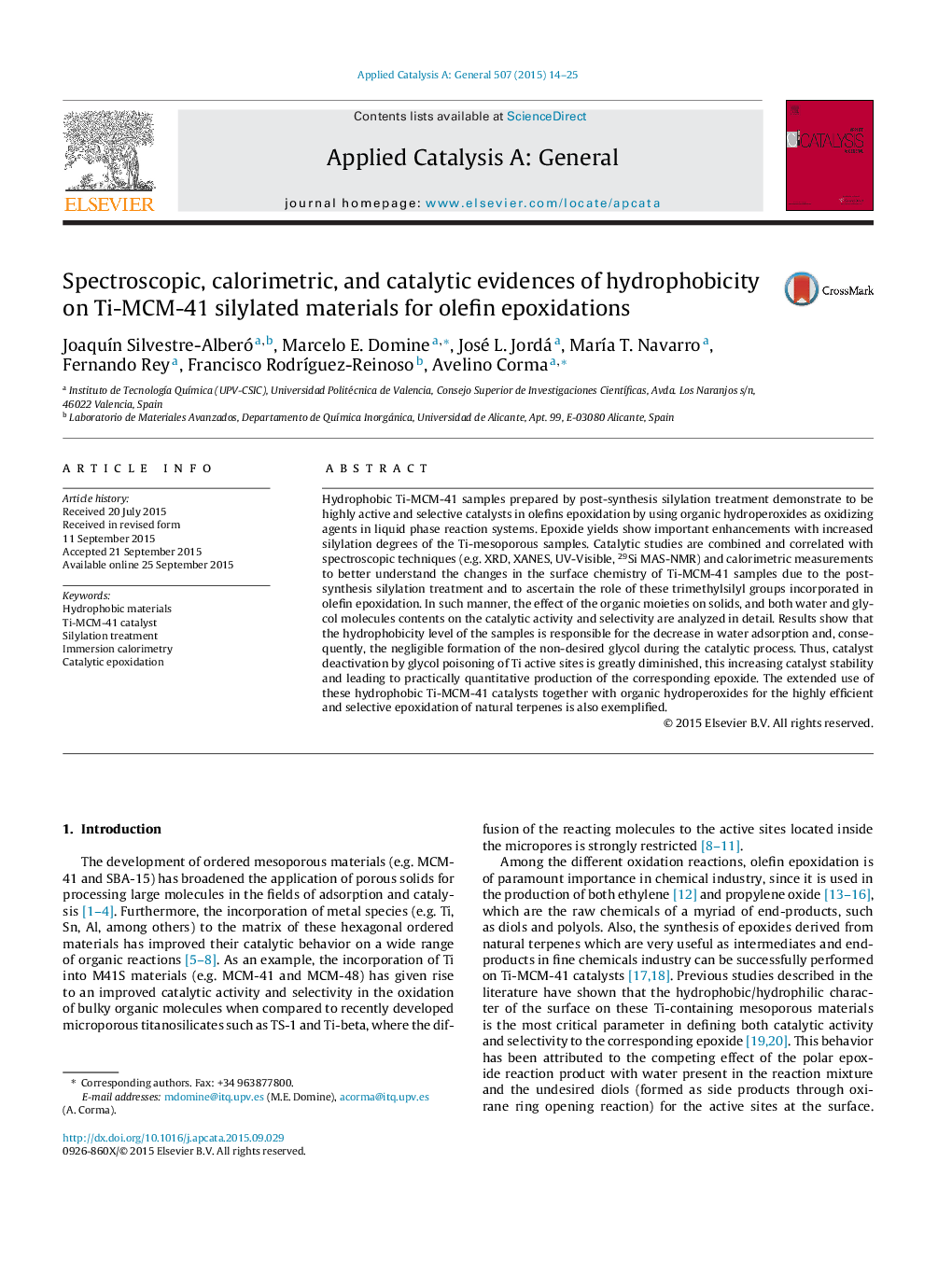| کد مقاله | کد نشریه | سال انتشار | مقاله انگلیسی | نسخه تمام متن |
|---|---|---|---|---|
| 39162 | 45810 | 2015 | 12 صفحه PDF | دانلود رایگان |

• Hydrophobic Ti-MCM-41-Sil. catalysts show high efficiency in olefins epoxidation with organic hydroperoxides.
• Catalytic activities are correlated with adsorption properties measured by spectroscopic techniques and calorimetry.
• Hydrophobicity level of samples is responsible for decreasing in water adsorption and catalyst deactivation by glycol poisoning.
• Increased stability of Ti-MCM-41-Sil. catalysts leads to practically quantitative production of epoxides even from natural terpenes.
Hydrophobic Ti-MCM-41 samples prepared by post-synthesis silylation treatment demonstrate to be highly active and selective catalysts in olefins epoxidation by using organic hydroperoxides as oxidizing agents in liquid phase reaction systems. Epoxide yields show important enhancements with increased silylation degrees of the Ti-mesoporous samples. Catalytic studies are combined and correlated with spectroscopic techniques (e.g. XRD, XANES, UV-Visible, 29Si MAS-NMR) and calorimetric measurements to better understand the changes in the surface chemistry of Ti-MCM-41 samples due to the post-synthesis silylation treatment and to ascertain the role of these trimethylsilyl groups incorporated in olefin epoxidation. In such manner, the effect of the organic moieties on solids, and both water and glycol molecules contents on the catalytic activity and selectivity are analyzed in detail. Results show that the hydrophobicity level of the samples is responsible for the decrease in water adsorption and, consequently, the negligible formation of the non-desired glycol during the catalytic process. Thus, catalyst deactivation by glycol poisoning of Ti active sites is greatly diminished, this increasing catalyst stability and leading to practically quantitative production of the corresponding epoxide. The extended use of these hydrophobic Ti-MCM-41 catalysts together with organic hydroperoxides for the highly efficient and selective epoxidation of natural terpenes is also exemplified.
Figure optionsDownload high-quality image (139 K)Download as PowerPoint slide
Journal: Applied Catalysis A: General - Volume 507, 25 October 2015, Pages 14–25